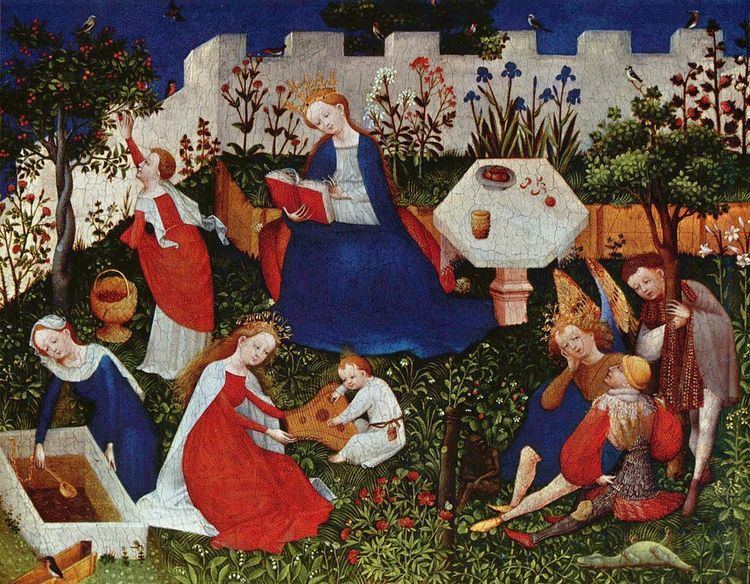 | ||
The denomination Upper Rhenish Master refers to an artist active ca. 1410-20 possibly in Strasbourg. The most famous painting of the artist is Paradiesgärtlein (Little Garden of Paradise), a mixed technique on oakwood, 26.3 x 33.4 cm, now in the Städel Museum (on permanent loan from the Historical museum in Frankfurt since 1922). The painting is the Städel's most famous example of the old German school.
The unknown artist in this world famous painting depict a secluded scene, with Mary the Mother and Jesus the Child in it. A secluded corner of a castle garden. A peaceful place protected by a wall from the violent outer world. Then the painter applies what Albertus Magnus of Cologne, philosopher and father of the church, meant as "hortus conclusus".
"hortus conclusus" (Lat. 'enclosed garden') a representation of the Virgin and Child in a fenced garden, sometimes accompanied by a group of female saints. The garden is a symbolic allusion to a phrase in the Song of Songs (4:12): 'A garden enclosed is my sister, my spouse'.
Some two hundred years later the Upper Rhenish Master realizes a painting that is designed for pleasure of spectators, but is also intended to be the vector of spiritual benefits. According to the 13th-century theologist, a pleasurable and sacred garden should contain "pleasant flowers .. trees .. animal .. a spring set in stone .. for its purity .. source of spiritual delectation" for a pious spectator.
Every detail of the Little Garden of Paradise stands for something more than itself. Many contemporary people were, probably, acquainted with symbols. If, in the Middle Ages few could read, any visual form of communication was an effective instrument in order to spread the faith. The Unknown artist dominates the use of symbols and orchestrates the stage as a playground not only appropriate for holy persons but for the new and upcoming vision of the nature, that will be a cornerstone in the 15th-century.
